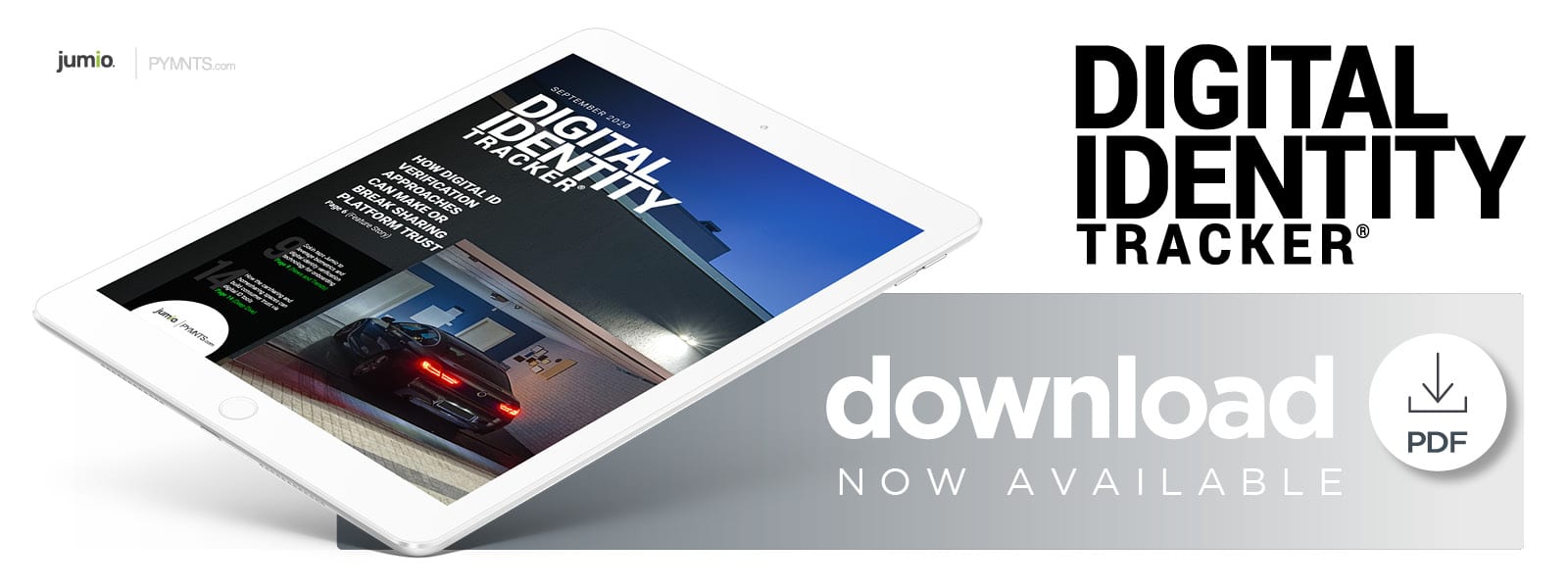How Digital ID Verification Approaches Can Make Or Break Sharing Platform Trust

More than 32 million U.S. consumers move every year, with many turning to shared spaces to store their belongings. Renters want assurances that they can stow their possessions safely and hosts need guarantees that renters are who they say they are, says Anthony Paine, co-founder of peer-to-peer (P2P) storage marketplace Stashbee. In the latest PYMNTS Digital Identity Tracker, Paine explains how using digital ID verification tools help foster trust in the moving economy.
Establishing trust is crucial for all companies that operate in the sharing economy. Homesharing platforms must vet renters or tenants and ensure that their personal and payment data remain secure, for example. They must also offer property owners timely payments and assurances that their residences will be covered in the event of damage. Ridesharing marketplaces similarly rely on trust to please the car owners and renters who use their platforms, verifying that both parties are who they say they are as well as complying with relevant regulations.
Trust is also at the heart of operations for London-based peer-to-peer (P2P) storage marketplace Stashbee, Co-founder Anthony Paine said. He recently spoke to PYMNTS about how the company works to verify the hosts and guests who use its online platform to search for locations to store their items or to find parking spots.
Many sharing economy businesses have also taken revenue hits during the ongoing COVID-19 pandemic, as consumers are modifying their habits to avoid physical contact with people and shared objects. This inclination has led many individuals to forgo or modify their vacation or travel plans, but Paine said the online storage space is beginning to bounce back as consumers become more comfortable with social distancing measures and general precautions.
The Host Onboarding Process
Sharing economy providers must rely on digital verification to ensure that hosts and users are safe, Paine explained. Stashbee’s verification process begins by guiding potential hosts during the creation of their online shopfronts. Hosts upload profile pictures and short descriptions of themselves, later providing the company with identification that a third-party partner verifies.
The final host verification step involves getting set up with Stashbee’s payment system. Hosts are required to have valid United Kingdom-based bank accounts, which the company then analyzes for functionality. Stashbee also verifies that any businesses attempting to use its platform are registered in the U.K., and it collects any value-added taxes.
“This enables us to create the right kind of invoices for a business so it can do its taxation properly,” he said. “The system spits it out automatically, but it’s something we have to check so that we don’t have businesses earning money on Stashbee fees without doing their taxes properly.”
Safeguarding properties in the event of damage is also crucial to cultivating long-term trust on sharing platforms, Paine said, and Stashbee works to establish this trust by insuring its hosts’ properties. It also makes payments to hosts in the unlikely event that guests default on their accounts.
Delivering safe yet seamless onboarding experiences is also critical to sharing economy providers, and Paine said his team is examining emerging digital identity verification technologies for hosts and renters. Such tools could include iPhone-enabled fingerprint scanning and facial recognition capabilities, QR codes, location-based technologies or Bluetooth-enabled options. The company is also considering adopting video-based authentication that can help it cross-reference individuals’ live images with forms of photo identification.
Catering To Renters’ Needs
Sharing economy businesses can also ensure users are satisfied by providing clear guidelines and policies for their services. Paine explained that Stashbee adheres to the rules outlined by the U.K. Self Storage Association, for example, which stipulate that hosts must provide lockable, clear and dry spaces with no structural damage. The company also requires hosts to provide spaces that meet a minimum quality level.
“When someone is ready to rent their space, … we still manually review every single listing,” Paine explained. “We have a customer service team that will check against all these criteria to make sure they meet [expectations] through the photos and descriptions and all the rest of it.”
Renters on the platform must also fill out an inventory detailing what they are storing as a prerequisite for its property insurance coverage. The host and guest parties cross-reference the inventory when the latter move their items into storage.
“Should the host want to inspect what’s being stored when it is moved in, that is permissible,” he said.
There are still occasionally situations in which sharing services fail to live up to customers’ expectations despite the various guidance and checks companies put in place. Paine said Stashbee attempts to satisfy these customers by finding them more adequate spaces or by reimbursing them if they are still unsatisfied. It may also remove hosts’ listings from its site if hosts fail to improve their offerings.
Sharing economy providers are working from many angles to provide safe and secure experiences for their users. They can also benefit from tapping various emerging technologies and approaches to make their onboarding experiences as seamless as possible.
